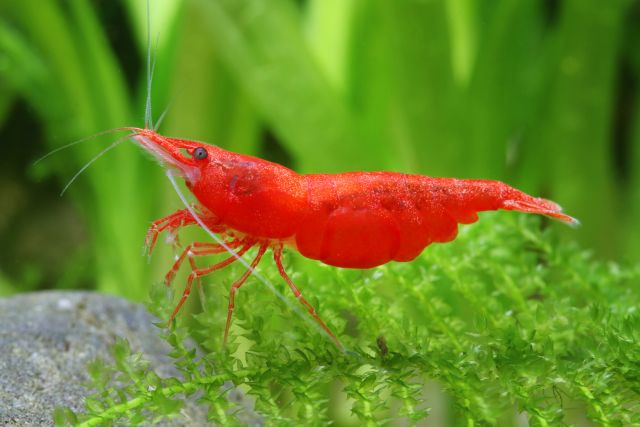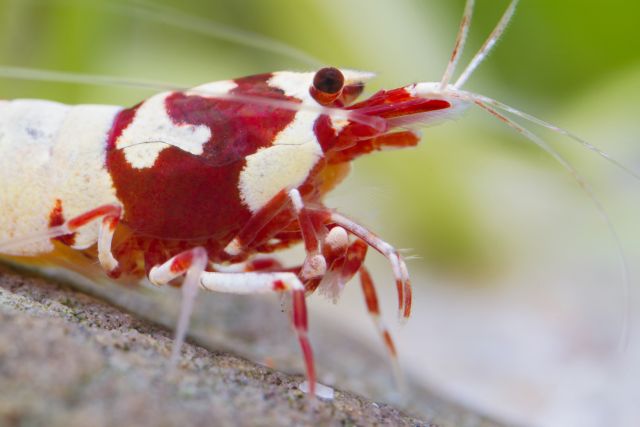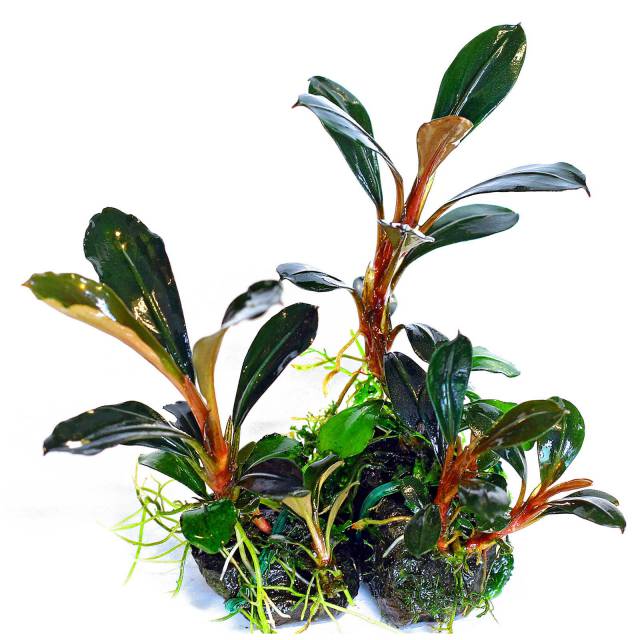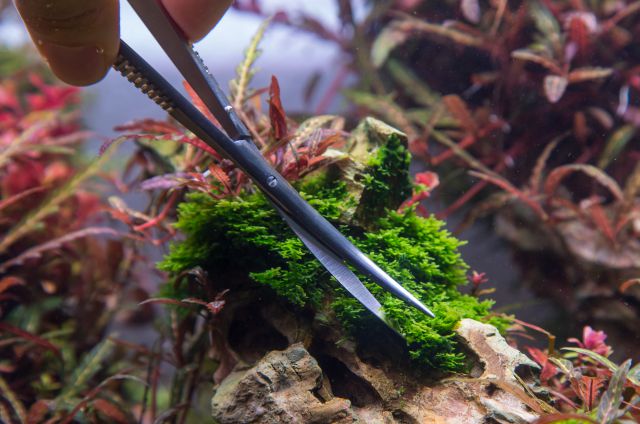Colorful shrimp are the icing on the cake in an aquarium, the small crawlies are useful as remanufacturers and cleaners AND look cute, offering many opportunities to observe with their behavioral repertoire .
Most regular shrimp species breed well in freshwater, and soon the colourful crustaceans may spark the desire to systematically breed them. The colours are radiant and bright - not just in the high breeds but also in species as the popular and robust Neocaridina - and new colour variations offer many exciting opportunities to experiment.

Red Sakura, the opaque variant of Neocaridina davidi - Copyright by Chris Lukhaup.
How to sensibly set up a shrimp tank in general with regard to filter, lighting and the decoration is already covered more specifically in our wiki article ”Shrimp Tank”. The basics of soil are covered in a dedicated paragraph of the article.
A dedicated shrimp breeding tank is set up a little more different than an aquarium in which shrimp are kept extensively - meaning, that they sure are procreating, but only in a way, that the population strength is at least preserved. This is different in focused breeding, where other things are important and therefore other aquarium tanksand equipment are chosen and importance is attached to other things than with a more decorative plant aquarium in your living room. This does NOT mean, that a breeding tank needs to be automatically ugly!
The article "selectively breeding shrimp" already covers the basics of selective breeding. In selective breeding, we select either shrimp with approximately similar features from a less homogenous group, which we find especially beautiful and therefore wish to mate with each other, to strengthen the pattern in their offspring - or we already have a more or less homogenous group we like but includes animals that don’t match our breeding goals and are therefore removed.

With new colour forms in the breed you will receive great patterns by selection! - Copyright by Chris Lukhaup.
Especially with the second option, the design of the breeding tank plays an indispensable role. If we want to sort out animals that do not meet our breeding goal, this should be done before sexual maturity so that the unwanted genes preferably do not find their way into the gene pool. But for that, you need to be able to properly see the shrimp!
A densely planted aquarium is therefore less suited for targeted shrimp breeding. In general, breeding tanks are kept clear, ideally with removable elements. Suitable, shrimp-fit stone pieces or epiphytes such as anubias, bucephalandra, java fern, Hygrophila pinnatifida or various mosses. tied to driftwood

Also the ISTA brand ceramic pads are perfectly suitable for the fixing of mosses in a breeding tank. Most epiphytes are robust and can live without CO2 supply and with less nutrients, which predestines them for use in a breeding tank, where the focus is not on plant aquaristics but on the breeding of invertebrates.
Especially with the mosses you should make sure that the padding is not too dense, so that the breeding tank stays neat. In a doubt you just trim the moss padding with a pair of suitable scissors and keep them short.

When removing the planted decoration, it may happen that particularly small shrimp cling to the plants. If you want to avoid taking them out of the aquarium together with the plants, you should remove the decoration pieces very slowly and gently shake them under water. Repeated dipping can also be effective. Often the blind passengers will take to their heels. Even if a small shrimp gets out of the water, it’s not a disaster - as long as the gills stay wet, the shrimp are not in danger. When put back into the water, it just swims its ways like nothing happened.
Important: the plants for a shrimp tank need to be properly prepared to prevent the precious breeding animals from getting accidentally harmed by adherent pollutants. We have dedicated an extensive article to the topic of "preparing plants for your shrimp tank".